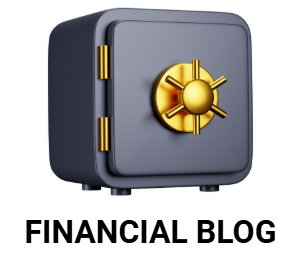Whether you’re a dedicated DIYer or prefer to lean on professional guidance, the truth is clear: smart financial planning can save you a lot of money over time.
Below, I’ll share some recent examples of tactical planning moves I participated in, including how much money was saved.

COVID Panic
In March 2020, you could be forgiven for thinking: “the world is ending, and I want to sell everything.”
But with proper perspective and an investment policy statement – both hallmarks of sound financial planning – many investors stayed the course.
They rode the stock market down more than 30% from peak to trough. Ouch. Nevertheless, they rebalanced along the way, selling stable assets (like bonds and money market) to buy stocks. This is not natural behavior – in fact, it’s the opposite of natural (“run from the threat” not “run toward the threat”). It’s learned behavior through experience and education.
In the end, while others made portfolio mistakes that cost them 10%, 20%, or more – permanent impairment of capital that can never be recovered – the intelligent investor has a better portfolio than if the COVID crash hadn’t occurred.
What’s the value of a 10% mistake on $1M?

Bring Me a Higher Yield
A friend-of-the-blog recently sold his successful small business for ~$10M or so. Not your everyday event, to be certain. But it’s more common than I realized.
We sat down to spitball some ideas, and my honest advice to him was:
- Put together a financial plan, which details future planned inflows and outflows of money. This would include some well-deserved near-term spending!
- Pick an asset allocation that corresponds with that plan.
- Then, dollar cost averages the money into that asset allocation (e.g. 4 large tranches of investment over 12 months, or something similar)
The problem: the idea of investing millions into the stock market concerned him. I believe good investing education can help this problem, but that education doesn’t occur overnight.

As we discussed next steps, I asked him, “Where is the money right now?”
The answer? In a large US bank savings account, earning 0.05% interest per year. That’s $5000 in annual interest on a $10M deposit.
So while we continued are long-term conversation about investing in the stock market, I gave him some vital near-term advice: seek out a higher yield via a brokerage money market fund.
In the ~18 months since I gave him that advice, his average yield has been ~4.5 – 5.0%. That’s ~$475,000 in interest on a $10M deposit.
Yes – a simple tip to be sure. But sometimes financial planning is all about identifying the simple fixed in your financial ecosystem that will provide $475,000 per year instead of $5,000.
He bought my coffee that day. Don’t tell Suze Orman.

The Car Loan
One of my clients bought a new car a few months ago and came to me with a simple question:
“Should I take advantage of the 0% financing they’re offering me?”
$40,000 cash out of pocket, or a $40,000 loan with zero interest?
The math is simple:
If she takes the loan, she can keep her $40,000 in a high-yield account (such as our previously mentioned money market account) and earn ~$1500 – $2000 per year in interest. There’s no downside. There’s no loan interest accruing against her.
$2000 a year isn’t life-changing money. But it’s easy money. Small, easy percentage points can move the needle over long periods of time.


